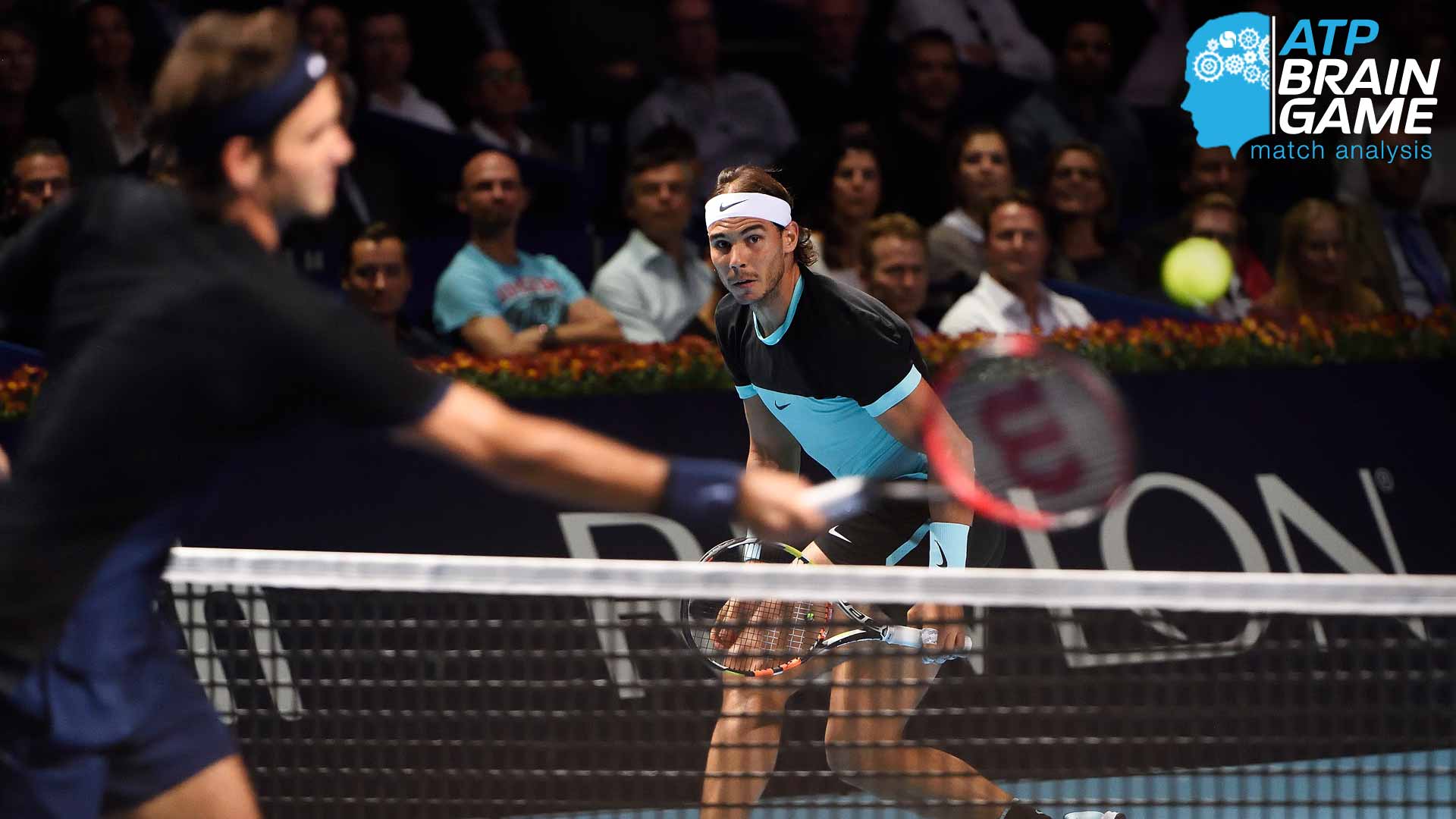Brain Game: Federer's Net Assault Pivotal In Thwarting Nadal
Attack the net, or be attacked to the backhand.
That’s the fundamental dynamic that Roger Federer successfully overcame in his 6-3, 5-7, 6-3 victory over Rafael Nadal in the Swiss Indoors Basel final on Sunday.
The match was more complex than that, but as always, the bottom line between these two is squarely focused on Federer swarming the net before Nadal can lock the Swiss star up in the “backhand cage”.
Federer won a healthy 70 per cent (30/43) of net points, including 77 per cent (17/22) serving and volleying and 62 per cent (13/21) approaching during the point.
While the majority of the tennis world seeks comfort at the baseline, Federer is extending his legacy at the pinnacle of the sport with his forward movement, successfully shrinking the court, and shortening the point.
Nadal won 60 baseline points to Federer’s 40 for the match, so it’s clearly not an issue for the Swiss star to find the right strategy to commit to.
Serve and Volley
While most players in today’s game are reluctant to serve and volley, it is clearly a centerpiece of Federer’s renaissance. His favourite location to employ it in the deuce court against Nadal was out wide, stretching the Spaniard off the court with his backhand return.
Federer won seven of eight there, including a crucial point at 5-3, deuce, in the third set. The Swiss picked up a tough backhand half-volley, and then guessed right with Nadal’s cross court forehand pass on the next shot to connect with a reflex backhand volley winner, and bring up match point.
In the ad court, Federer again targeted the Spaniard’s backhand return with his serve and volley strategy, winning six of eight serving right down the “T” in the center of the court. Federer also won three of five serving and volleying out wide in the ad side.
Federer also served and volleyed on four second serves, winning two. This tactic helped to force Nadal to second-guess if he could get away with a floating slice return or be more aggressive with more risk hitting it lower and harder.
Approaching
Federer won 13 points coming forward in general rally play, with the most prolific being a forehand approach to Nadal’s backhand, where he won seven of eight points.
Federer mixed in four return approach points, only winning one, but was still able to raise the pressure meter at the front of the court, although not winning the point. A key benefit of the return approach is the double faults it can also extract.
Nadal hit three double faults, with the first coming at 3-5, 0-15 in the opening set, as Federer ran all the way outside the alley to crush a forehand return. Two points later, Nadal would be broken and surrender the opening set.
Nadal’s second double fault came at 1-2, 30-30 in the third set, producing a break point for Federer as the Swiss was once again looking to run around a backhand return and punish a forehand. The third double fault came at 2-3, 30-0, in the third set, with Federer well inside the baseline looking to immediately attack.
Nadal’s Tactics
Nadal, as expected, went after Federer’s backhand, and while the Swiss hit five impressive backhand winners, he also committed 26 backhand groundstroke errors, and 10 backhand return errors.
Nadal either tried to hit hard to rush the Federer backhand, or hit heavy spin to get the ball up high on the one-hander, which is a lot tougher to achieve on an indoor hard court surface than the Spaniard’s preferred outdoor clay environment.
Nadal’s forehand has been a problem area for him this year, but 10 forehand winners and only 16 groundstroke errors is a big step forward with his renewed confidence and improved form in recent tournaments.
Nadal also won 83 per cent (10/12) of net points and could have snuck in a few more times as well. He should actually look to come in more against Federer, to get more opportunities at a higher win percentage in the front of the court, and also to deny the Swiss getting there first.
It was a good final for both players, as Federer keeps rolling with a seventh Basel title and Nadal’s confidence grows from pushing the Swiss star deep into a third set in his hometown.
Craig O’Shannessy uses extensive tagging, metrics and formulas to uncover the patterns and percentages behind the game. Read more at www.braingametennis.com.


